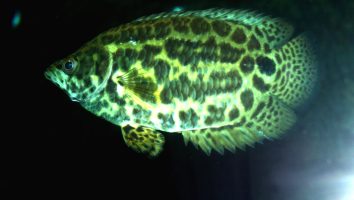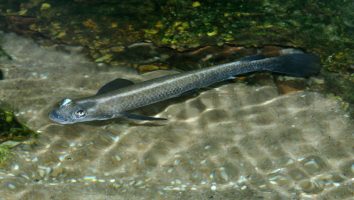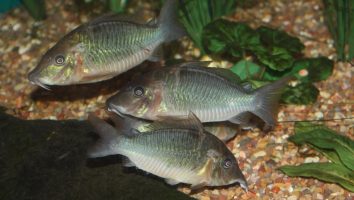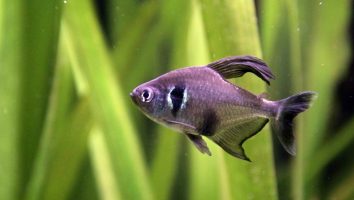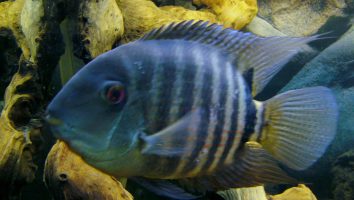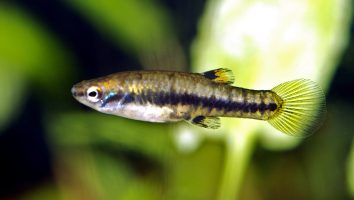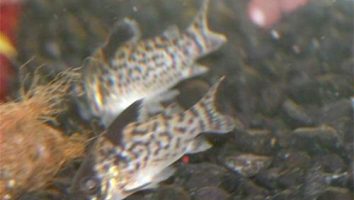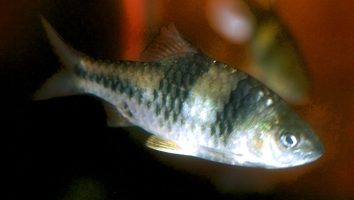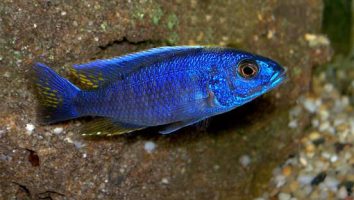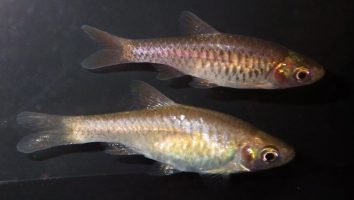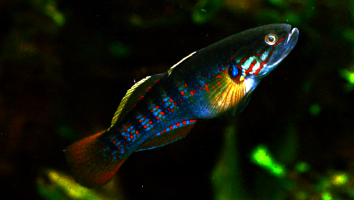The golden pristella tetra (Pristella maxillaris) is a peaceful, hardy, and easy to care for freshwater fish that makes a great addition to any community aquarium.
This species is often overlooked in favor of more flashy fish, but don’t let that deter you. They’re a great little fish that is sure to bring some life and color to your tank!
In this guide, we’ll teach you everything you need to know about golden pristella tetra care. You’ll learn about their diet, tank mates, size, lifespan, and more.
Table of contents
Species overview
The golden pristella tetra (Pristella maxillaris) is a freshwater fish that is found in various parts of South America. The most heavily concentrated areas are in Guyana, Suriname, and French Guiana.
This fish prefers slow-moving waters with a lot of vegetation. They are typically found in swampy areas and flooded forests.
The golden pristella tetra is a peaceful fish that is compatible with a wide variety of tank mates. They are a popular choice for many nano freshwater aquariums.
The main draw of this fish is its bright golden color. This makes it a popular choice for many aquarium enthusiasts.
Appearance
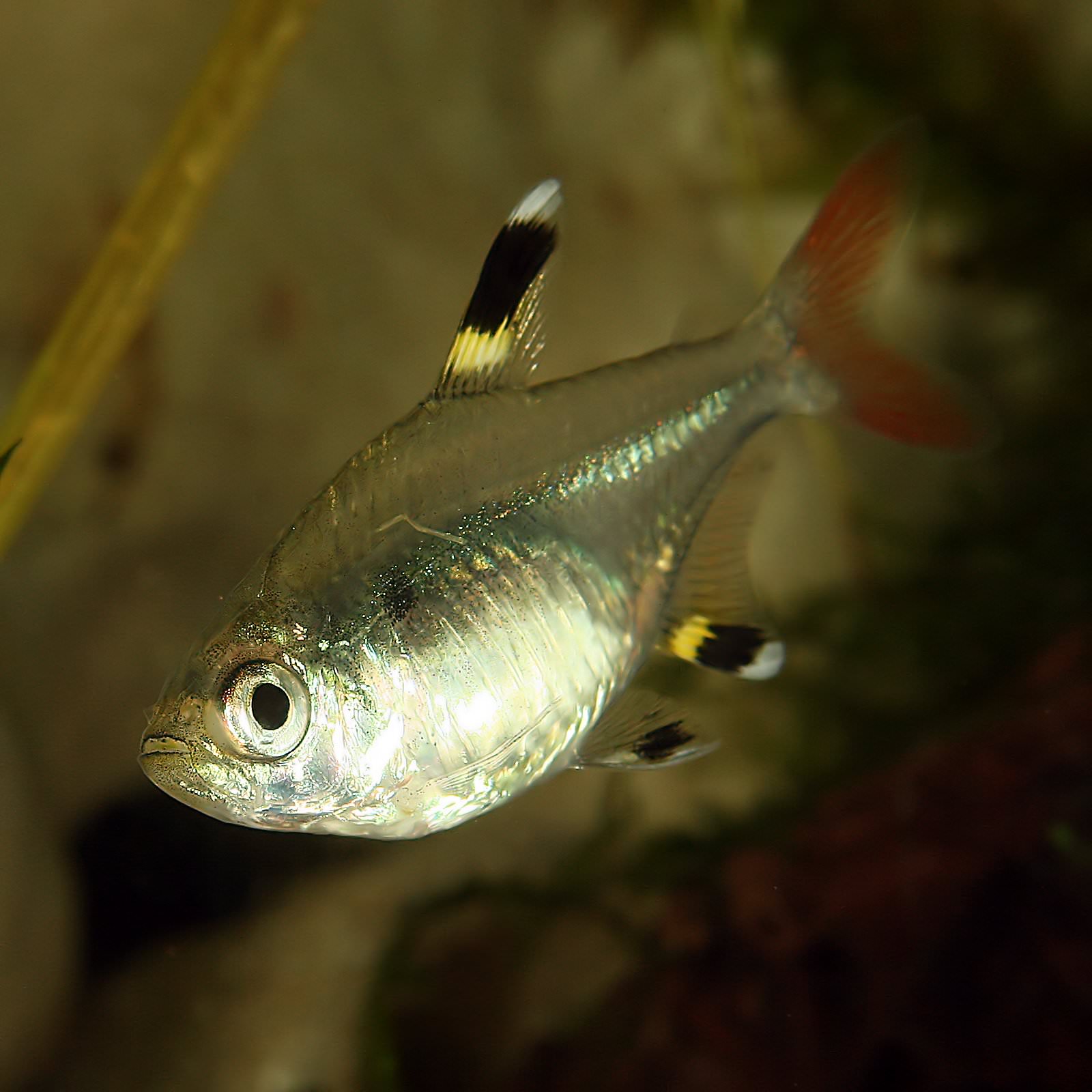
The Golden Pristella Tetra is a very small freshwater fish that is a golden yellow color all over their body. The only exception to this is a small black stripe that runs from the middle of their eyes all the way back to their tails.
This black stripe is more visible on males than females and it’s one of the ways you can tell them apart.
The body shape of this fish is very similar to other tetras. They have a long slender body that tapers down towards their tails.
The fins on this fish are all fairly average in size. The dorsal fin is slightly taller than their anal fin and both of these fins start about two-thirds of the way back on their bodies.
They have a forked caudal fin that is slightly taller than their body is wide.
The pectoral fins are very small and thin. The ventral fins are located about halfway down their body and are also very small.
Lifespan
The lifespan of a golden pristella tetra is around 5 to 8 years. However, there are a number of factors that impact their life expectancy.
For starters, if these fish haven’t reproduced then their lifespan will usually be on the higher side of this range. That process can really take a toll on the fish.
The general level of care they receive obviously matters a great deal as well. Even though these are very hardy fish, they’ll obviously live longer in optimal conditions.
Size
The golden pristella tetra grows to a maximum size of 2.5 cm (1 in).
Tank
Tank Size
The recommended tank size for golden pristella tetras is at least 10 gallons for a small school of 5-6 fish. If you want to keep a larger school you’ll need a 20 gallon tank or larger.
As with most fish, the more space you can give them the better. Tetras are relatively small fish but they are very active. They love to swim in schools and will often chase each other around the tank. If you have the space, we recommend going with a 20 gallon tank or larger.
Water Parameters
These little guys are found in brackish and freshwater habitats in South America. They prefer slightly brackish water with a high pH.
In the wild, their diet consists mainly of small crustaceans and insects. They’re omnivores and will eat just about anything you put in the tank.
When it comes to water parameters, the golden pristella tetra is a bit more demanding than some of the other freshwater fish on this list. They prefer slightly brackish water with a high pH. If you can’t replicate those conditions exactly, try to get as close as possible.
Here are a few guidelines to help you create a healthy environment for your golden pristella tetras.
- Water temperature: 72 to 82 degrees Fahrenheit
- pH levels: 7.5 to 8.5
- Water hardness: 5 to 15 dGH
- Alkalinity Levels: 4-8 dKH
What To Put In Their Tank
Golden Pristella Tetras are a peaceful schooling fish that come from the rivers of South America.
In the wild, these fish spend most of their time near the bottom of the river where they can find food and shelter.
When it comes to setting up their tank, you’ll want to mimic their natural environment as much as possible.
A good substrate to use would be something soft like sand. This will protect their delicate barbels and allow them to root around for food.
As for plants, you can include a few if you’d like but it’s not necessary. These fish are not known to nibble on vegetation so you don’t have to worry about that.
In terms of hiding places, you can use rocks, driftwood, or caves. These fish like to have a place to retreat to when they feel threatened so make sure there are plenty of options available.
Common Diseases
There are a few diseases that you need to be aware of when keeping golden pristella tetras. The most common one is white spot disease, also known as ich.
This disease is caused by a parasite that attaches itself to the fish and causes white spots to form on their body. It’s a very common disease in freshwater fish and can be quite serious if left untreated.
Other diseases that can affect this species include red velvet disease, hole-in-the-head disease, and velvet disease. All of these are relatively rare but can still occur if the fish are kept in poor water conditions.
The best way to prevent your fish from getting sick is to maintain a clean and stable habitat. This means regular water changes, filtering the water, and keeping an eye on the water parameters.
If you notice anything out of the ordinary (white spots, changes in behavior, etc.) then it’s important to act fast and consult a vet. The sooner you start treatment, the higher the chance is that your fish will recover.
Behavior & Temperament
The golden pristella tetra is a peaceful fish that does well in community tanks. These fish are relatively small, so they can be kept with other small fish species. They’re not known to be fin nippers, so they can be kept with fish that have long fins.
The golden pristella tetra is an active swimmer and does best in tanks with plenty of plants and hiding places. These fish are shy, so they need places to hide when they feel threatened.
Golden pristella tetras are schooling fish, so they do best when they’re kept in groups of six or more. They’re social creatures and enjoy being around others of their own kind. When they’re in a group, they’re more likely to come out of their hiding places and be active.
Tank Mates
Golden pristella tetras are beautiful, peaceful fish that make a great addition to any community tank. They’re not aggressive and get along well with most other fish species.
The only caveat is that they need to be kept in schools. A group of six is the bare minimum, but more is always better.
As long as you can provide them with some company, they’ll do fine with most other fish. Some compatible tank mates include:
- Neon Tetras
- Cardinal Tetras
- Rummy Nose Tetras
- White Cloud Mountain Minnows
- Tetras
- Guppies
- Mollies
- Platies
Breeding
Successfully breeding Golden pristella tetras isn’t too different from breeding other tetra species. The biggest challenge is separating the fry from the adults since they’re so small.
Start by setting up a breeding tank. It should be at least 10 gallons and filled with soft, acidic water. Then, add plenty of floating plants.
Next, add a few pairs of adult fish. Make sure that you have two females for every male. Once they’re in the tank, providing them with high-quality foods will help to trigger spawning.
After a few weeks, you should start to see the females getting larger. That’s a sign that they’re full of eggs.
When ready, the females will release their eggs. The males will then fertilize them.
Once the eggs are fertilized, the adults should be removed from the tank. The eggs will hatch in about 24 hours.
To prevent them from getting sucked into the filter, use a sponge on any inlets. You can also add an air stone to help keep them oxygenated.
Once they’ve hatched, the fry will feed on the Infusoria in the tank. You can supplement their diet with baby brine shrimp or crushed-up flakes.
As they grow, you can slowly start to introduce them to larger foods. Once they’re big enough, they can be moved to the main tank.
Conclusion
The Golden Pristella Tetra is a great fish for beginners and experienced fishkeepers alike. They’re easy to care for, beautiful to look at, and get along well with other fish.
If you’re looking for a great community fish, we highly recommend giving them a try. We think you’ll be very happy with them!

